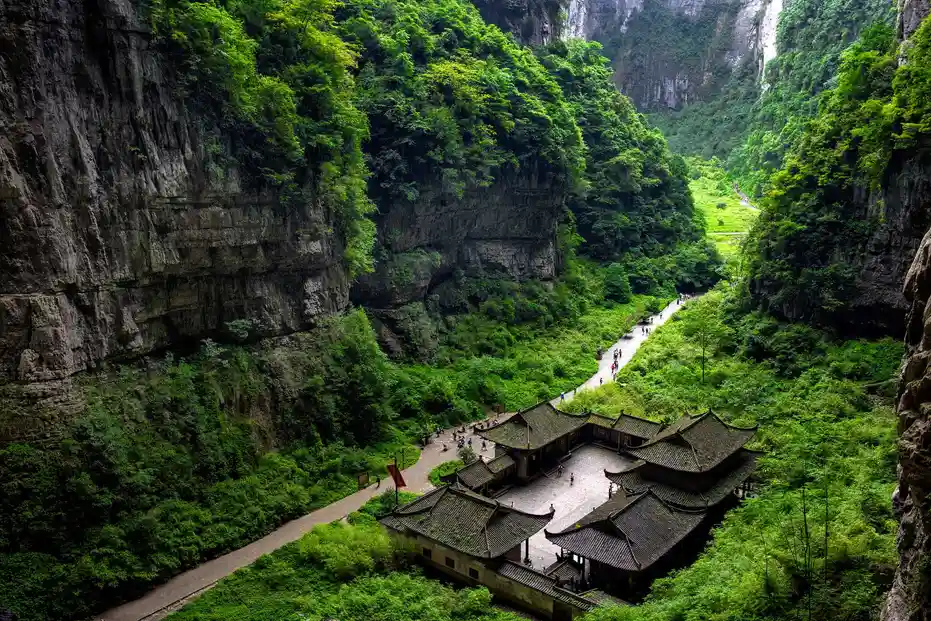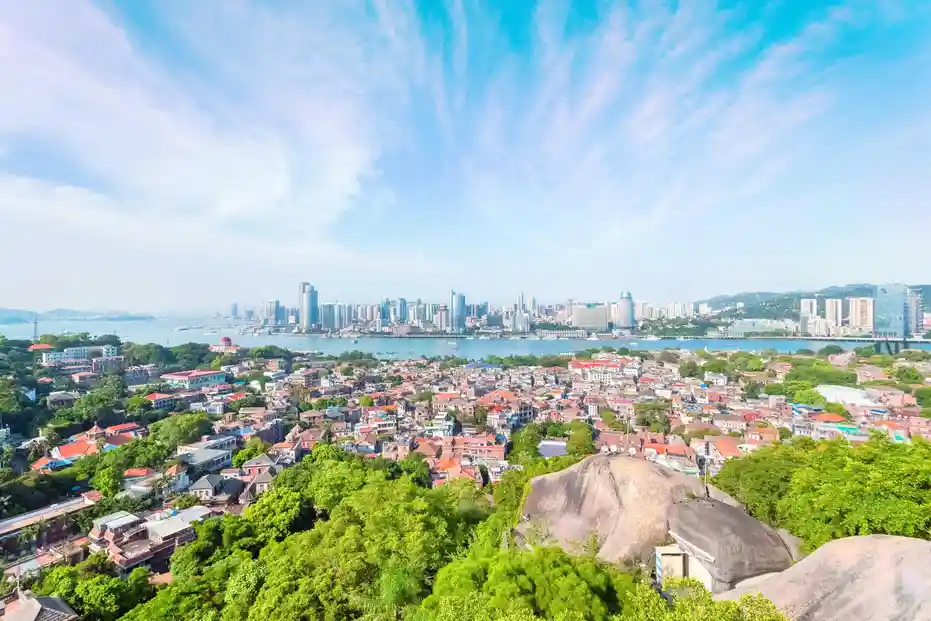Introduction: Discovering One of China’s Most Spectacular Natural Wonders
The Wulong Three Natural Bridges stand as a breathtaking testament to nature’s power and artistry. Located in Chongqing, Southwest China, this UNESCO World Heritage Site draws visitors with its towering limestone arches and lush surroundings. These bridges were formed over millions of years through erosion and tectonic activity.
This guide explores every aspect of the Wulong Three Natural Bridges, from geological origins to visitor tips. Whether you’re planning a trip or simply fascinated by natural landscapes, this article offers valuable insights. The site is part of the larger South China Karst system, known for its exceptional geological features.
With increasing global interest in eco-tourism, the area has become a must-visit destination. Its unique combination of natural beauty and cultural significance makes it stand out. In the following sections, we’ll dive deep into what makes this location so special.
From hiking trails to local legends, there’s much to uncover. This comprehensive overview ensures you get the most out of your visit—or your research.
Geological Formation: How Nature Built the Bridges
The Wulong Three Natural Bridges were shaped by natural forces over millions of years. Tectonic uplift and water erosion played key roles in their creation. The region sits within a karst landscape, where soluble rocks like limestone dissolve easily.
Rainwater, slightly acidic due to carbon dioxide, seeped into cracks in the rock. Over time, this process widened fissures and formed underground rivers. These rivers carved massive caves, which eventually collapsed, leaving behind natural bridges.
Three main bridges—Tianlong, Qinglong, and Heilong—now span deep valleys. Each bridge has distinct characteristics in height, width, and formation style. Geological studies show they formed during different periods, adding to their scientific value.
| Bridge Name | Height (m) | Span (m) | Notable Feature |
|———–|———-|——–|—————-|
| Tianlong Bridge | 200 | 135 | Largest and oldest |
| Qinglong Bridge | 150 | 110 | Home to waterfall |
| Heilong Bridge | 100 | 130 | Dark, narrow passage |
Understanding this formation helps appreciate the site’s fragility and importance. It also explains why conservation efforts are critical.
Location and Access: Getting to Wulong Three Natural Bridges
The Wulong Three Natural Bridges are located about 130 km from downtown Chongqing. The nearest town is Wulong, which serves as the main gateway. Travelers can reach the site by bus, car, or organized tour.
From Chongqing, public buses run daily to Wulong County. The journey takes around 2.5 to 3 hours. Once in Wulong, local shuttles take visitors directly to the scenic area entrance.
For those driving, the G65 Baomao Expressway provides a smooth route. GPS navigation to “Wulong Karst Tourism Area” will lead you correctly. Parking is available near the ticket office.
Alternatively, guided tours from Chongqing include transport, entry, and a local guide. These are ideal for international travelers unfamiliar with the region. Many tours also combine the bridges with Furong Cave or Houping Giant Dolines.
Plan your visit during weekdays to avoid crowds. Early morning arrival ensures cooler temperatures and fewer people on the trails.
Exploring the Three Bridges: A Walk Through Nature’s Masterpiece
Walking through the Wulong Three Natural Bridges feels like stepping into another world. The path winds through dense forest, leading to dramatic gorges and towering arches. Each bridge offers a unique perspective and experience.
Tianlong Bridge, the first encountered, rises 200 meters above the valley floor. Its massive span creates a natural roof, shielding the trail below. Sunlight filters through cracks, creating striking light patterns.
Just beyond lies Qinglong Bridge, named after the “Green Dragon.” A seasonal waterfall cascades down its face during rainy months. The sound echoes through the canyon, enhancing the sense of awe.
The final bridge, Heilong Bridge, is narrower and darker. Its passage feels more intimate, with moss-covered walls and cool air. A stream runs beneath, adding to the mystical atmosphere.
Along the way, informative signs explain geology and ecology. Benches and viewing platforms allow rest and photo opportunities. The entire loop trail is about 1.5 km long and suitable for most fitness levels.
Wear comfortable shoes and bring water. The path includes stairs and uneven surfaces, especially near the bridges’ bases.
UNESCO Recognition and Environmental Significance
The Wulong Three Natural Bridges are part of the South China Karst UNESCO World Heritage Site. They were inscribed in 2007 for their outstanding geological value. This recognition highlights their role in understanding Earth’s history.
Karst systems like Wulong help scientists study climate change and water cycles. They also support rare plant and animal species. Conservation is vital to preserving these ecosystems.
Local authorities enforce strict rules to minimize human impact. Littering, graffiti, and off-trail hiking are prohibited. Rangers patrol the area to ensure compliance.
Efforts include reforestation and monitoring visitor numbers. Sustainable tourism practices are encouraged. These measures protect the site for future generations.
By visiting responsibly, travelers contribute to preservation. Choosing eco-friendly tours and respecting nature makes a real difference.
Cultural and Mythological Stories Behind the Bridges
Beyond geology, the Wulong Three Natural Bridges hold deep cultural meaning. Local folklore tells of dragons shaping the land. The names Tianlong (Heavenly Dragon), Qinglong (Green Dragon), and Heilong (Black Dragon) reflect these myths.
One legend says the bridges were formed when three dragons descended to protect the valley. Another claims they are the remains of a celestial pathway. These stories are passed down through generations.
Nearby villages preserve traditions linked to the landscape. Festivals and rituals honor the spirits of the mountains and rivers. Some elders still perform offerings at certain sites.
These narratives enrich the visitor experience. They connect nature with human imagination and belief. Understanding them adds depth to any trip.
Tour guides often share these tales during walks. Listening enhances appreciation of the place beyond its physical beauty.
Best Time to Visit and Weather Considerations
The ideal time to visit the Wulong Three Natural Bridges is spring (March–May) or autumn (September–November). Temperatures are mild, ranging from 15°C to 22°C (59°F–72°F). Skies are usually clear, offering great visibility.
Summer brings higher humidity and occasional rain. While the greenery is lush, trails can become slippery. Thunderstorms may disrupt access temporarily.
Winter is quiet and less crowded. However, temperatures can drop below 5°C (41°F), and fog is common. Some facilities may have reduced hours.
Rain enhances the waterfalls, especially at Qinglong Bridge. But heavy downpours can make paths unsafe. Always check the forecast before departure.
Early morning visits provide the best light for photography. Midday sun can create harsh shadows under the bridges.
Visitor Tips and Practical Information
To make the most of your trip, plan ahead. The scenic area opens daily from 8:00 AM to 5:30 PM. Tickets cost around 135 CNY (approx. $19 USD), including access to all bridges.
Wear non-slip footwear—trails can be wet and steep. Bring a light jacket; it’s often cooler in the shaded valleys. A small backpack with water and snacks is recommended.
Cameras are welcome, but drones require special permission. Smoking and loud noises are discouraged to protect the environment.
Restrooms and a small café are available near the entrance. There are no accommodations inside the park, so book a hotel in Wulong town.
Consider hiring a local guide for deeper insights. English-speaking guides are available through official tour operators.
Conclusion: Why the Wulong Three Natural Bridges Deserve Global Attention
The Wulong Three Natural Bridges are more than a tourist attraction—they are a window into Earth’s ancient past. Their geological significance, cultural depth, and visual grandeur make them truly unique.
From the towering arches to the whispered legends, every element tells a story. As eco-tourism grows, this site stands as a model for sustainable travel.
For travelers, researchers, and nature lovers alike, a visit offers lasting memories. Proper planning and respect for nature ensure a rewarding experience.
We encourage responsible exploration and continued conservation. The Wulong Three Natural Bridges are not just China’s treasure—they belong to the world.



